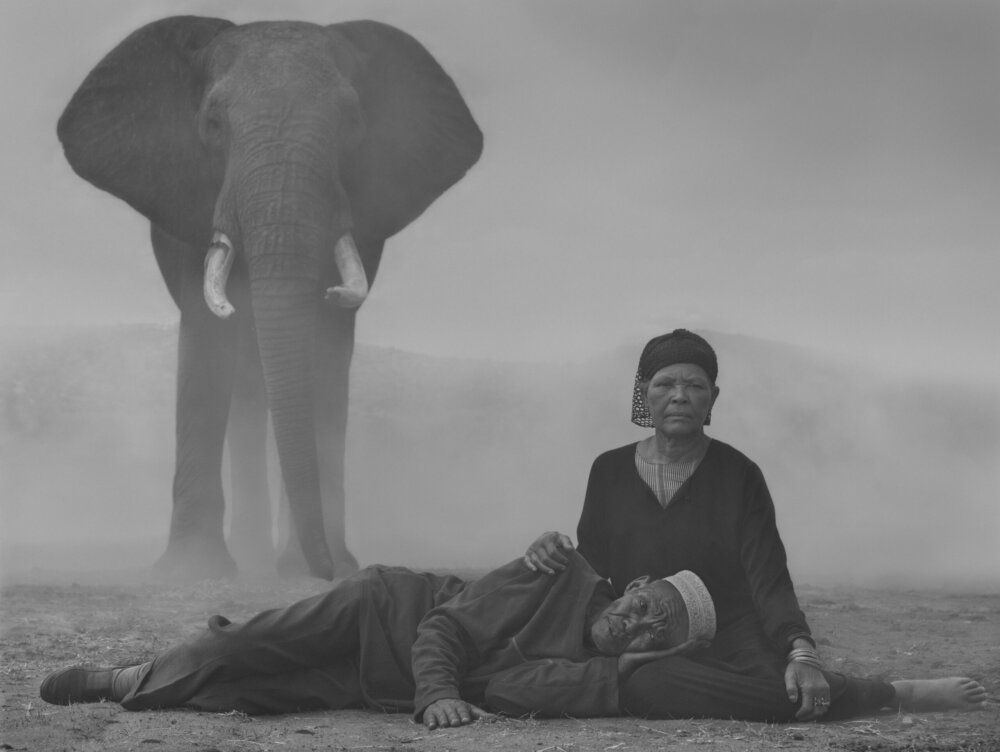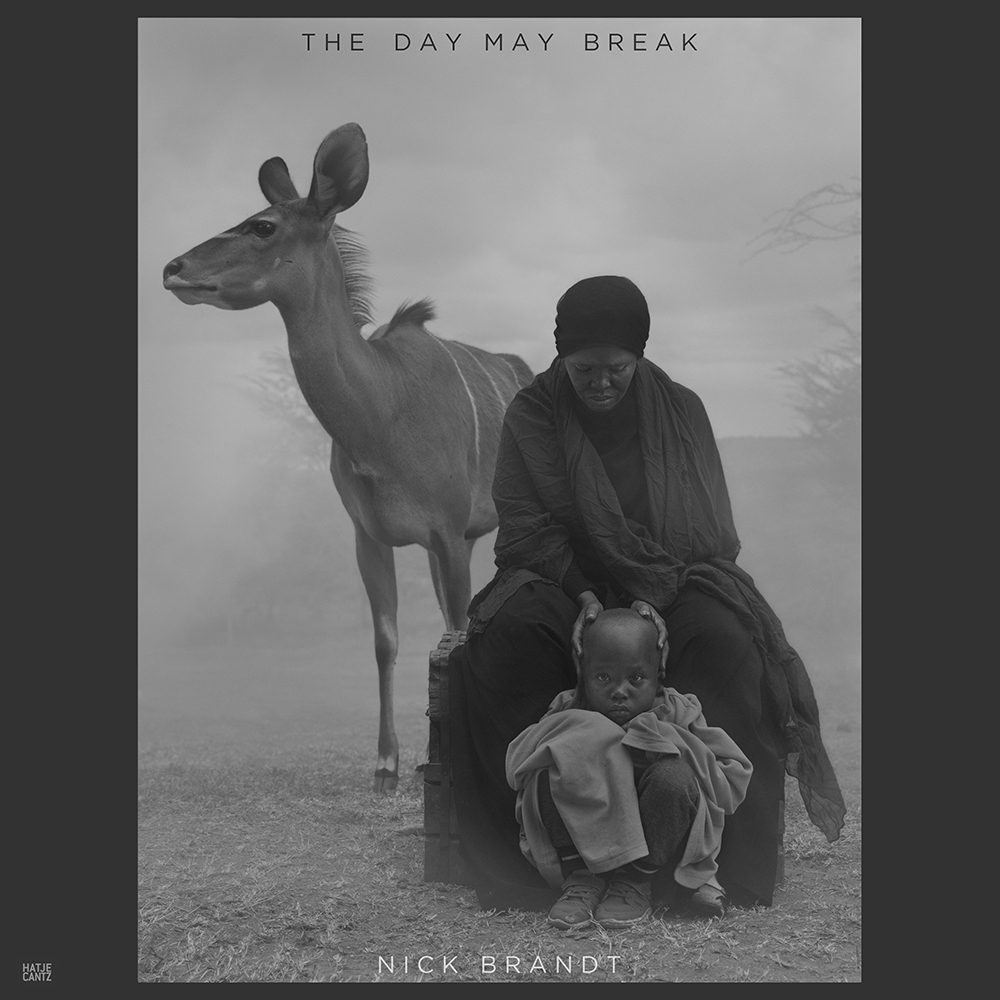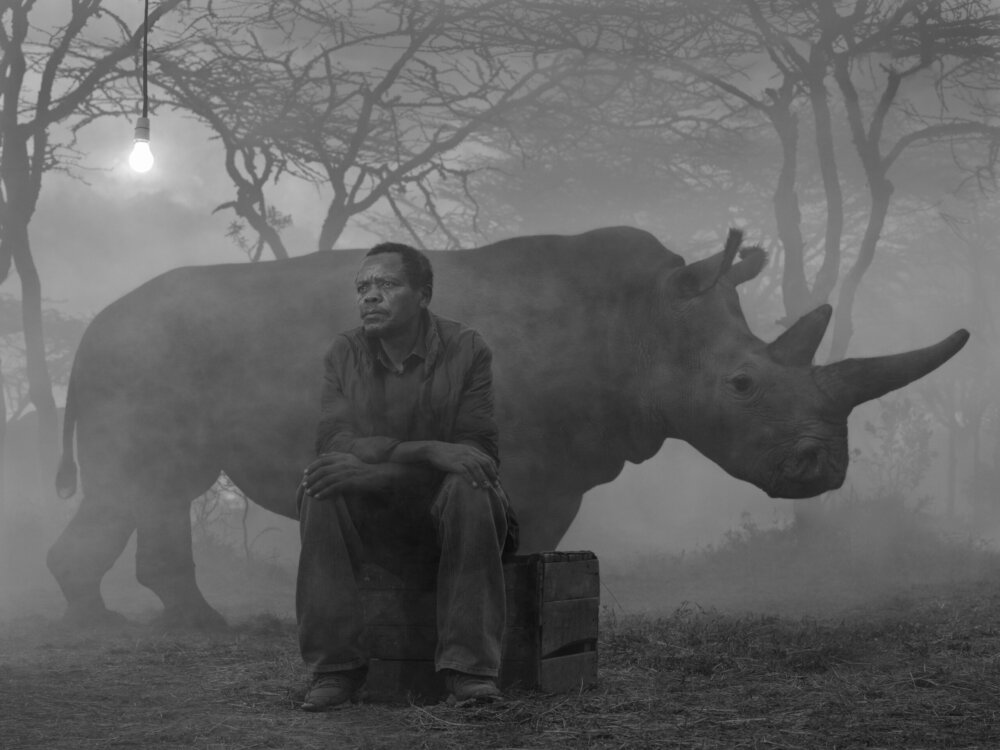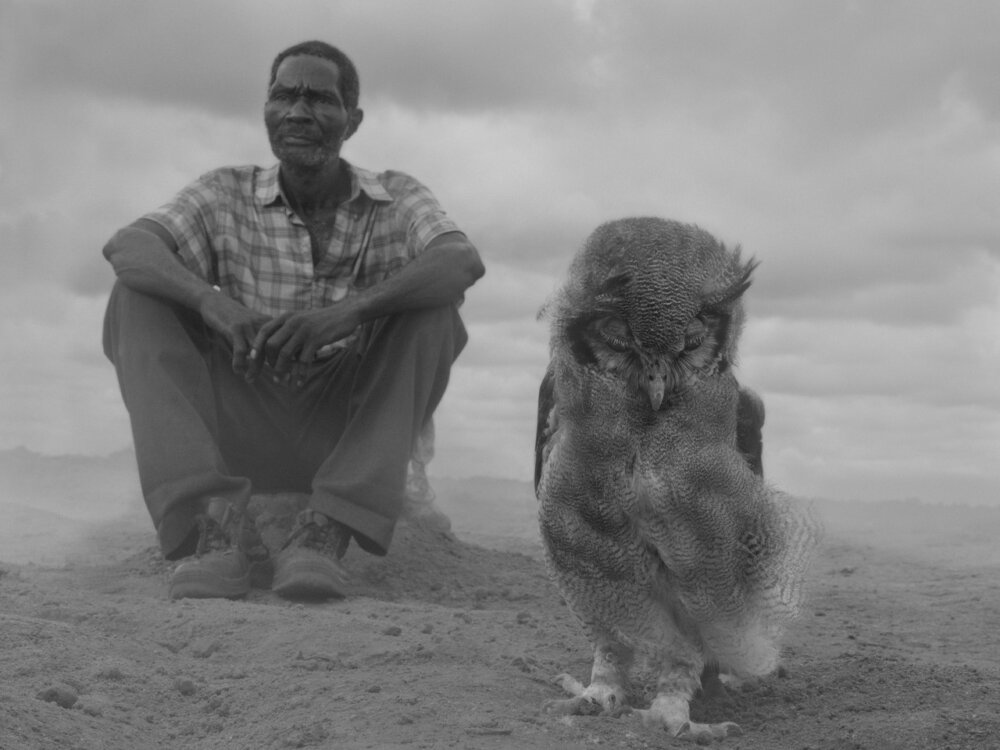Nick Brandt
The Day May Break

Fatuma,Ali & Bupa, Kenya, 2020. © Nick Brandt courtesy ATLAS Gallery.
The Day May Break was photographed in Zimbabwe and Kenya in late 2020. It is the first part of a global series portraying people and animals that have been impacted by environmental degradation and destruction.
The people in the photos have all been badly affected by climate change – some displaced by cyclones that destroyed their homes, others such as farmers displaced and impoverished by years-long severe droughts.
The photographs were taken at five sanctuaries/ conservancies. The animals are almost all long-term rescues, victims of everything from the poaching of their parents to habitat destruction and poisoning. These animals can never be released back into the wild. As a result, they are habituated, and so it was safe for human strangers to be close to them, and photographed in the same frame at the same time.
The fog is the unifying visual. We increasingly find ourselves in a kind of limbo, a once-recognizable world now fading from view. Created by fog machines on location, this often renders the animals almost a dream, or a memory of what the people once experienced in their lives. It is also an echo of the suffocating smoke from the wildfires, driven by climate change, devastating so much of the planet.
However, in spite of their loss, these people and animals are the survivors. And therein lies possibility and hope.
Nick Brandt, The Day May Break
Hatje Cantz Verlag, 2021
168 pages, 32 x 34 cm

Nick Brandt, ‘The Day May Break’, Hatje Cantz, 2021.

James and Fatu, Kenya, 2020. © Nick Brandt courtesy ATLAS Gallery.

Patrick and Harriet on ground, Zimbabwe, 2020. © Nick Brandt courtesy ATLAS Gallery.
